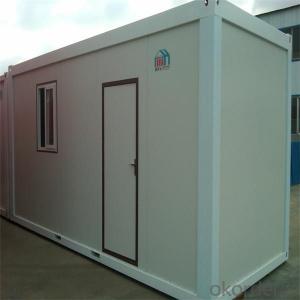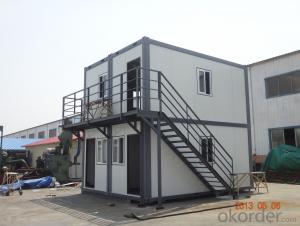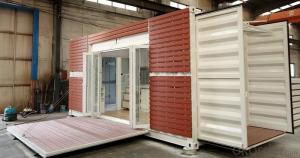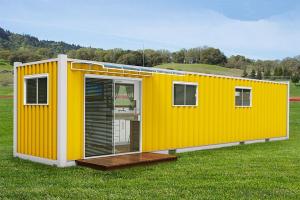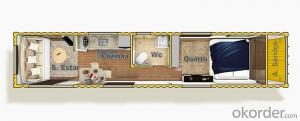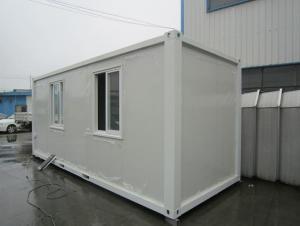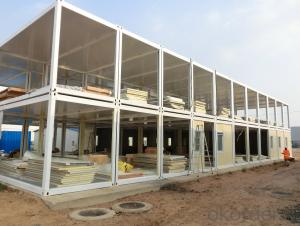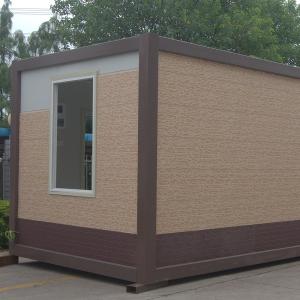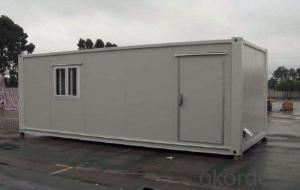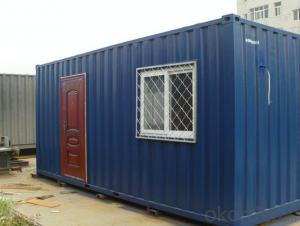Prefabricated Container Apartments Container Houses
- Loading Port:
- Tianjin
- Payment Terms:
- TT OR LC
- Min Order Qty:
- 5 set
- Supply Capability:
- 1000 set/month
OKorder Service Pledge
OKorder Financial Service
You Might Also Like
Prefabricated Container Apartments Container Houses
Features
1. Easy to transport and load: Modified from ISO standard shipping container (20', 40' or 40HQ) .
2. Movable and permanenet connection.
3. Strong and durable: steel shipping container wall.
4. Inner decoration is exquisite, the design is Human-oriented. And could design according to the customers' requirement.
Dimension:
10’: 3027x2435x2591/2791mm
20’: 6055x2435x2591/2791mm
30’: 9000x2435x2591/2791mm
40’: 12192x2435x2591/2791mm
Technical Details
Roof: 0.5mm color-bond steel sheet roof
Floor: 18mm plywood board& fiber-cement board+1.5~3.5mm vinyl sheet &15mm bamboo flooring
Window: UPVC double glass tilt& swing window with Alu. Roller shutter
External door: Steel security door
Internal door: UPVC internal door& Aluminum frame sandwich panel door
External wall panel: 50/60/75/100/150mm sandwich wall panel
Internal wall: 50/60/75mm sandwich wall panel
Ceiling: 50mm EPS& rock-wool sandwich ceiling panel
Sanitary: White ceramic
Kitchen: MDF cabinet surface with lacquered paint and bench top with quartz stone
Electrical fittings: Wiring, power point, switch, light, circuit-breaker etc
Gutter: PVC gutter with down pipe.
Packing
One 40HQ loads 7 sets of standard 20ft container houses
Features
1) Environmental Benefits
Energy saving
Avoid thermal bridge in walls, floor and roof
Water saving - more than 90% saving
Low waste - no pollution
Use almost entirely recyclable materials
Low dust pollution - in city construction
2) Benefits in Construction
Efficient use of architectural area - 8-10% improved space usage
Anti-earth quake - soft and light structure reduce the influence of earthquake
Anti-wind - strong structure
Light self-weight - lighter than 1/4 - 1/6 of traditional reinforced concrete structure
Builds up to 2-3 floors
Extended choice of external decorative finishes
3)Financial Benefits
Lower price - lower capital investment
2-3 times faster than traditional reinforced concrete structure
No limit to land surface and efficient use of land
Highly durable -long life
FAQ:
Q1: Why buy Materials & Equipment from OKorder.com?
A1: All products offered by OKorder.com are carefully selected from China's most reliable manufacturing enterprises. Through its ISO certifications, OKorder.com adheres to the highest standards and a commitment to supply chain safety and customer satisfaction.
Q2: How do we guarantee the quality of our products?
A2: We have established an advanced quality management system which conducts strict quality tests at every step, from raw materials to the final product. At the same time, we provide extensive follow-up service assurances as required.
Q3: What is the service life of a Prefabricated House?
A3: The life of a prefabricated house is at least double that of a corresponding concrete building.
Q4: Why choose a Prefabricated House?
A4: Prefabricated Homes are built to high aesthetic and architectural standards. Additionally, Prefabricated Houses are more resistant (better earthquake protection) and are not affected by extreme weather events, use eco-friendly materials, and offer excellent insulation and energy efficiency.
Q5: Are Prefabricated Houses safe?
A5: Our houses are completely safe. Advances in the field of prefabricated buildings have reached a point that today Prefabricated Homes are considered safer than traditional homes built with brick. In areas with high seismic activity and in countries prone to extreme weather events residents prefer prefabricated homes for safety reasons.



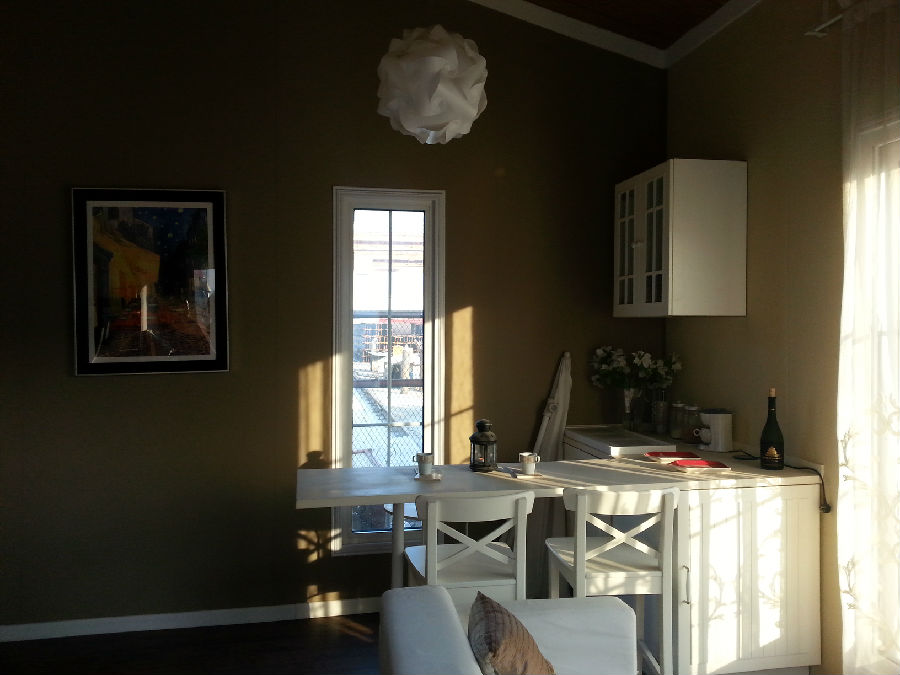
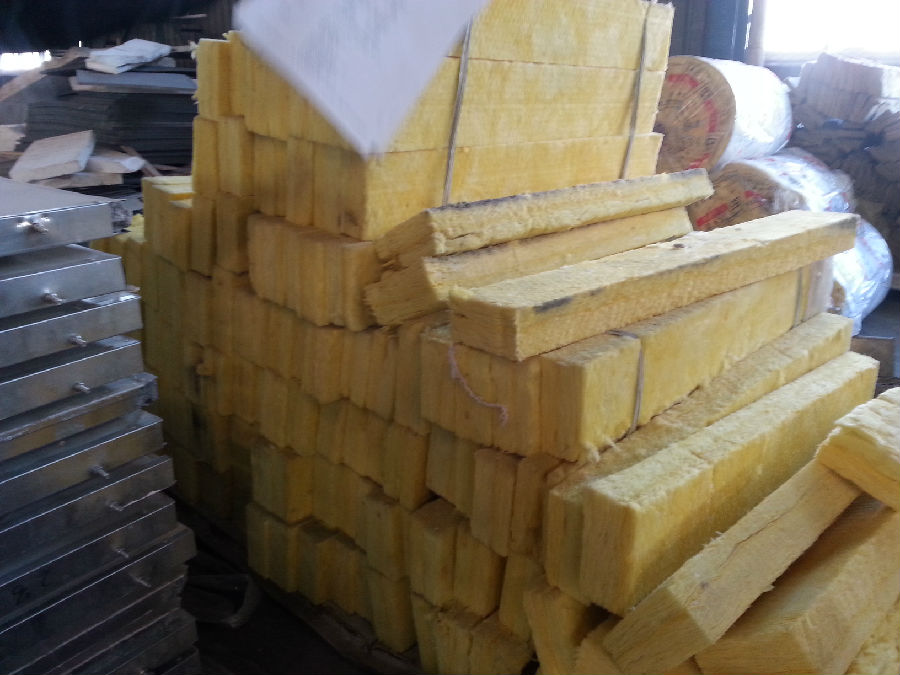
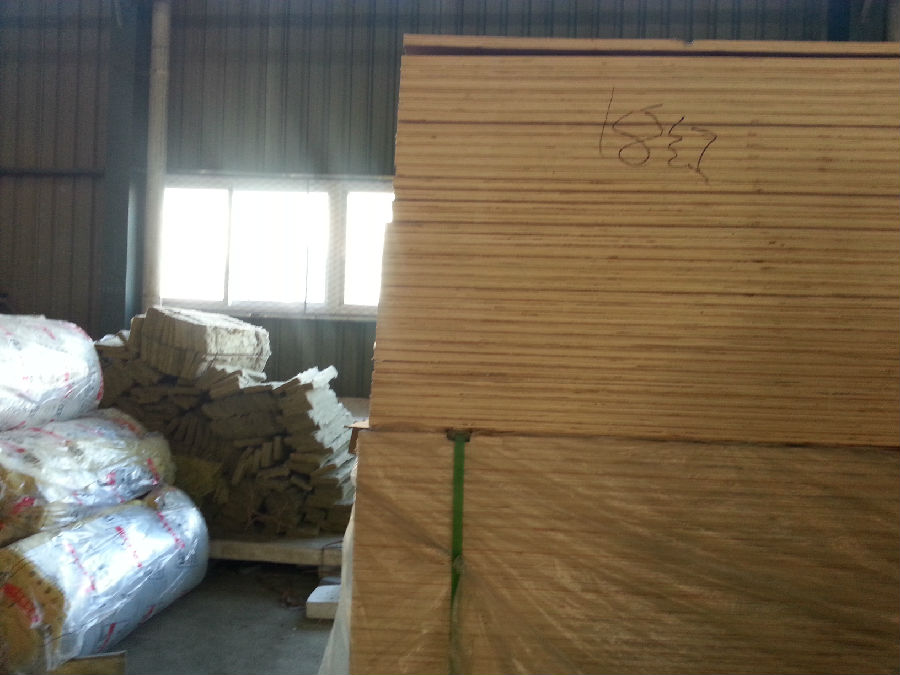
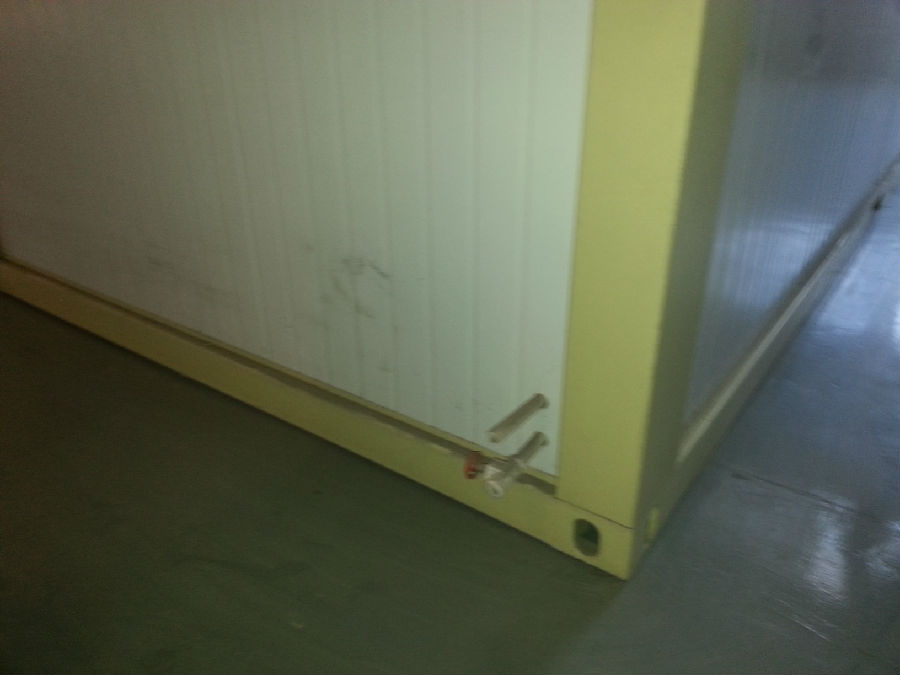
- Q:Are container houses prone to rusting?
- Container houses are typically made of steel, which is known to be susceptible to rusting. However, with proper maintenance and treatment, container houses can be protected against rusting. Most container houses undergo a process called corten steel treatment, which involves the application of a protective layer to prevent rust formation. Additionally, regular inspections and maintenance can help identify and address any potential rusting issues. It is important to note that the durability and longevity of a container house depend on various factors including the quality of the steel used, climate conditions, and maintenance efforts. Overall, while container houses can be prone to rusting, proper care and maintenance can ensure their longevity and structural integrity.
- Q:Are container houses suitable for Airbnb investment properties?
- Yes, container houses can be suitable for Airbnb investment properties. Container houses offer several advantages for Airbnb hosts, such as cost-effectiveness, sustainability, and unique design appeal. These structures can be easily customized and modified to create comfortable living spaces with all necessary amenities. Additionally, container houses can be transported and installed in various locations, providing flexibility for hosts to offer their properties in different areas. Overall, container houses can be a profitable investment for Airbnb properties due to their affordability and potential to attract guests seeking a distinctive and eco-friendly accommodation experience.
- Q:Are container houses customizable?
- Yes, container houses are highly customizable. One of the major advantages of container houses is their versatility and adaptability to different design preferences and needs. These houses can be easily modified and customized to suit individual preferences, whether it's for a single container or multiple containers combined to form a larger living space. The customization options for container houses are vast. They can be designed to include various features such as windows, doors, skylights, or even balconies. The interior layout can be tailored to accommodate different room arrangements, including bedrooms, bathrooms, kitchens, and living spaces. Additionally, container houses can be customized with insulation and heating systems to ensure a comfortable living environment. Container houses can also be customized in terms of aesthetics. They can be painted in different colors, adorned with various cladding materials, or decorated with plants, artwork, or other personalized touches. The exterior design can be modified to create a unique and visually appealing appearance. Furthermore, container houses can be easily expanded or modified as needed. Additional containers can be added or removed, allowing for flexibility in size and layout. This makes container houses particularly suitable for those who may need to adjust their living space over time. Overall, the customizable nature of container houses provides individuals with the freedom to create a unique and personalized living space that reflects their style and meets their specific requirements.
- Q:Are container houses suitable for tiny house living?
- Yes, container houses can be suitable for tiny house living. Container houses are built using shipping containers, which are sturdy, durable, and easily transportable. They offer several advantages for tiny house living. Firstly, container houses are cost-effective. Shipping containers are readily available and relatively inexpensive compared to traditional building materials. This makes them an affordable option for those looking to live in a tiny house. Secondly, container houses are highly customizable. With a little creativity and craftsmanship, shipping containers can be transformed into functional and comfortable living spaces. They can be designed to include all the necessary amenities such as a kitchen, bathroom, bedroom, and living area. Additionally, container houses are eco-friendly. By repurposing shipping containers, we are reducing waste and recycling materials that would otherwise go unused. This makes container houses an environmentally sustainable choice for tiny house living. Furthermore, container houses are portable. Shipping containers can be easily transported to different locations, making it possible to move your tiny house whenever needed. This flexibility allows for a change of scenery or the ability to relocate without having to build a new house from scratch. However, it's important to consider some potential challenges as well. Container houses may require insulation to regulate temperature, as metal containers can be prone to extreme heat or cold. Additionally, the size of a shipping container may be limiting for some individuals or families, as they typically offer less space compared to other tiny house designs. In conclusion, container houses can be a suitable option for tiny house living. They offer affordability, customization possibilities, sustainability, and portability. However, it's important to carefully consider your specific needs and requirements before deciding if a container house is the right choice for you.
- Q:Can container houses be designed for music or recording studios?
- Certainly, container houses have the potential to be transformed into music or recording studios. By engaging in careful planning and customization, container houses can present an optimal setting for musicians, producers, and artists to generate and record their music. To begin with, container houses provide a flexible and cost-efficient option for constructing a music or recording studio. The modular design of shipping containers allows for easy adjustments and adaptations to meet the specific demands of a studio. They can be effortlessly insulated, soundproofed, and equipped with all the necessary electrical and technical equipment needed for music production. Furthermore, container houses can be expanded or combined to generate larger studio spaces if required. Multiple containers can be stacked or connected side by side to offer ample room for recording equipment, instruments, and soundproof booths. Moreover, container houses possess exceptional sound isolation properties, rendering them ideal for music studios. The sturdy steel construction of shipping containers guarantees minimal external noise interference, thus creating a tranquil and controlled environment for recording and mixing music. Additionally, container houses can be designed with appropriate ventilation and climate control systems to ensure optimal temperature and humidity levels, which are vital for preserving musical instruments and equipment. Lastly, container houses present the advantage of mobility. They can be conveniently transported and relocated to various locations, making them suitable for musicians or recording studios that may require frequent moves or travel for projects. In conclusion, container houses can be effectively designed and converted into music or recording studios. They offer a versatile, cost-effective, and customizable solution for creating professional and functional spaces that cater to the unique requirements of musicians and recording artists.
- Q:Are container houses suitable for areas with extreme weather conditions?
- Container houses can be suitable for areas with extreme weather conditions, but it largely depends on how they are designed and constructed. With proper insulation and reinforcement, container houses can withstand extreme heat, cold, wind, and even seismic activity. One key advantage of container houses is their structural strength. Shipping containers are built to withstand harsh conditions during transportation, including storms and rough seas. This inherent strength makes them a good choice for areas prone to hurricanes, tornadoes, or heavy snow loads. By reinforcing the container with additional steel supports, it can further enhance its ability to withstand extreme weather conditions. Insulation is another crucial factor in making container houses suitable for extreme weather. Proper insulation helps regulate the internal temperature, keeping the interior cool in hot climates and warm in cold climates. This can be achieved through various insulation materials, such as spray foam, rigid foam boards, or fiberglass batts. Additionally, double-glazed windows and energy-efficient doors can contribute to better insulation and energy savings. Furthermore, container houses can be designed with features that mitigate the impact of extreme weather. For example, sloped roofs can help shed snow or rainwater more effectively, preventing excessive weight or leakage. Installing hurricane shutters or impact-resistant windows can protect against high winds and flying debris. Additionally, incorporating passive design principles, like strategic placement of windows for natural light and ventilation, can help reduce reliance on mechanical heating or cooling systems. However, it is important to note that container houses still require proper planning, engineering, and professional construction to ensure their suitability for extreme weather conditions. Local building codes and regulations should be followed, and consultation with experts in container house construction is highly recommended. With the right design, materials, and construction techniques, container houses can indeed be a viable option for areas with extreme weather conditions.
- Q:Can container houses be designed with large windows?
- Yes, container houses can be designed with large windows. One of the advantages of container houses is their versatility in design, allowing for various customization options, including the incorporation of large windows. With proper engineering and design considerations, containers can be modified to accommodate larger or multiple windows, creating a more open and spacious feel to the interior while maximizing natural light and views. Architects and designers have been successful in transforming container houses into modern, aesthetically pleasing homes by strategically placing large windows to enhance both the interior and exterior of the structure. Additionally, the use of large windows in container houses can provide a sense of connection with the surrounding environment and can be an effective way to make the most of limited space.
- Q:What is the size of a typical container house?
- The size of a typical container house can vary, but it is often around 320 square feet for a single container, while larger designs can combine multiple containers to create a living space of up to 1,000 square feet or more.
- Q:Are container houses suitable for artist studios?
- Indeed, artist studios can indeed find suitability in container houses. The versatility of these structures enables them to be tailored to meet the unique requirements of artists. Furthermore, they present a cost-effective and environmentally friendly alternative to conventional studio spaces. By incorporating windows, skylights, and insulation, containers can be effortlessly transformed into spacious and well-lit studios. Moreover, their modular design allows for easy expansion or modification as the artist's needs evolve. Additionally, container houses offer the advantage of being positioned in various locations, granting artists the opportunity to work in secluded and inspiring environments. The durability of these structures ensures their ability to withstand the rigors associated with artistic endeavors. All in all, container houses provide a pragmatic and innovative solution for artists seeking a suitable studio space.
- Q:What are the different types of container house foundations?
- There are several different types of foundations that can be used for container houses, depending on various factors such as soil conditions, local building codes, and personal preferences. 1. Concrete Slab Foundation: This is one of the most common types of foundations used for container houses. A concrete slab is poured directly onto the ground, providing a stable and level surface for the containers to sit on. It requires excavation, proper site preparation, and reinforcement with steel bars or mesh. 2. Pier Foundation: Also known as a post foundation, this type involves supporting the containers on a series of concrete piers or posts. These piers are strategically placed under the corners and midpoints of the containers to distribute the weight evenly. It is a cost-effective option, especially for sites with uneven terrain or poor soil conditions. 3. Strip Foundation: A strip foundation consists of a continuous concrete strip that runs along the perimeter of the containers. It provides a stable base for the containers and helps distribute the weight evenly. This type of foundation requires more excavation and site preparation compared to other options. 4. Screw Pile Foundation: Screw piles are long metal screws that are driven into the ground using hydraulic machinery. They provide a strong and stable foundation for container houses and can be used in various soil conditions. This type of foundation is quick to install, requires minimal excavation, and can be easily adjusted or removed if needed. 5. Raft Foundation: A raft foundation, also known as a mat foundation, involves laying a large concrete slab directly on the ground. The entire footprint of the container house is supported by this slab, providing a solid and level foundation. This type of foundation is suitable for areas with poor soil conditions or areas prone to earthquakes as it distributes the load over a larger area. It is important to consult with a structural engineer or a professional builder to determine the most suitable foundation type for your container house, considering factors such as soil reports, local regulations, and budget constraints.
1. Manufacturer Overview |
|
|---|---|
| Location | |
| Year Established | |
| Annual Output Value | |
| Main Markets | |
| Company Certifications | |
2. Manufacturer Certificates |
|
|---|---|
| a) Certification Name | |
| Range | |
| Reference | |
| Validity Period | |
3. Manufacturer Capability |
|
|---|---|
| a)Trade Capacity | |
| Nearest Port | |
| Export Percentage | |
| No.of Employees in Trade Department | |
| Language Spoken: | |
| b)Factory Information | |
| Factory Size: | |
| No. of Production Lines | |
| Contract Manufacturing | |
| Product Price Range | |
Send your message to us
Prefabricated Container Apartments Container Houses
- Loading Port:
- Tianjin
- Payment Terms:
- TT OR LC
- Min Order Qty:
- 5 set
- Supply Capability:
- 1000 set/month
OKorder Service Pledge
OKorder Financial Service
Similar products
New products
Hot products
Related keywords
